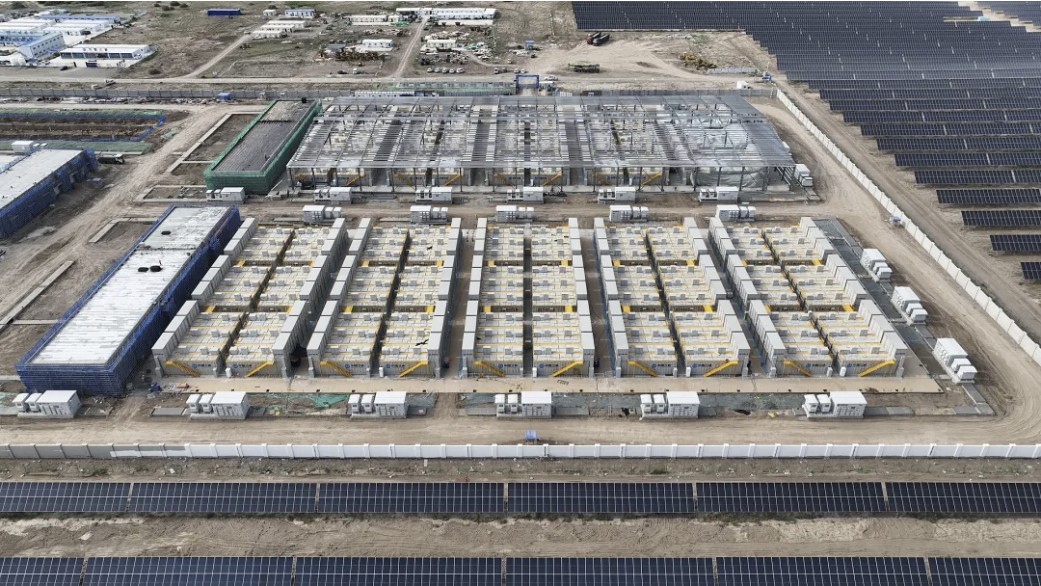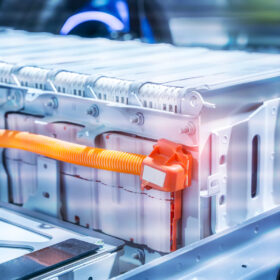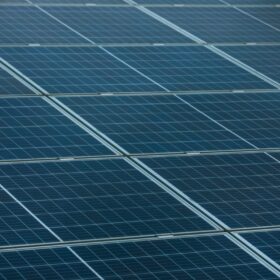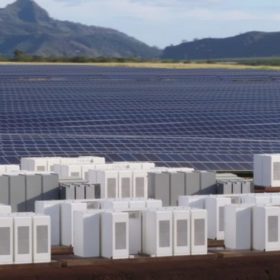From ESS News
China has completed the main construction works on the world’s largest vanadium redox flow battery (VRFB) energy storage project. The project, backed by China Huaneng Group, features a 200 MW/1 GWh VRFB system paired with a 1 GW solar farm.
With a total investment of CNY 3.8 billion ($520 million), the project spans 28,000 mu (1,870 hectares) in the county of Jimusar, Xinjiang. Once operational, it is expected to generate 1.72 TWh of electricity annually, while reducing CO₂ emissions by more than 1.6 million tonnes per year, according to the developer.
The system provides five hours of continuous discharge and is designed to mitigate the intermittency of renewable generation by acting as both a buffer and a stabilizer for the local grid. This role is especially critical in Xinjiang, a region rich in solar and wind resources but challenged by curtailment and transmission bottlenecks.
The integrated solar-plus-storage facility is developed by Huaneng Xinjiang Jimusar Power Co., with engineering and system integration handled by PowerChina Northwest Engineering Corp. and flow battery systems supplied by Dalian Rongke Power. Other key contributors include the Chinese Academy of Sciences’ Dalian Institute of Chemical Physics, which supported R&D on large-scale system integration, and Xinjiang University, which is engaged in environmental evaluation and land rehabilitation studies.
Unlike lithium-ion batteries, vanadium flow batteries use electrolyte solutions containing vanadium ions to store and release energy. The technology offers a number of advantages for grid-scale storage: high safety (non-flammable), long cycle life (over 15 years), and the ability to decouple power and energy capacity, offering greater design flexibility.
Despite its benefits, the VRFB has been constrained by high upfront costs and relatively low energy density. The Jimusar project is seen as a key testbed to validate the economic viability of the technology at scale. Industry analysts say such large-scale deployments are essential for driving down costs and proving the commercial readiness of alternative long-duration storage technologies.
The project is part of a broader strategy by Xinjiang to become a national clean energy hub. The region aims to connect over 20 GW of new energy storage to the grid by 2025. The Jimusar project is also a component of China’s first integrated “wind-solar-storage-hydrogen” demonstration base, underscoring its role as a catalyst for broader decarbonization efforts.
Local officials say the successful implementation of this project provides a replicable model for other highly-renewables regions and strengthens the foundation for a new power system centered around clean energy.
This content is protected by copyright and may not be reused. If you want to cooperate with us and would like to reuse some of our content, please contact: editors@pv-magazine.com.








2 comments
By submitting this form you agree to pv magazine using your data for the purposes of publishing your comment.
Your personal data will only be disclosed or otherwise transmitted to third parties for the purposes of spam filtering or if this is necessary for technical maintenance of the website. Any other transfer to third parties will not take place unless this is justified on the basis of applicable data protection regulations or if pv magazine is legally obliged to do so.
You may revoke this consent at any time with effect for the future, in which case your personal data will be deleted immediately. Otherwise, your data will be deleted if pv magazine has processed your request or the purpose of data storage is fulfilled.
Further information on data privacy can be found in our Data Protection Policy.